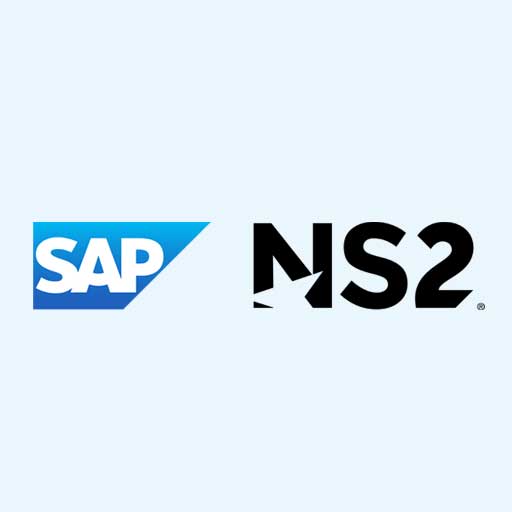Artificial intelligence is no longer a “nice to have” for U.S. regulated industries, it’s a necessity. But when handling mission-critical workloads, adopting AI doesn’t mean piloting a flashy chatbot and calling it a day. It means meeting stringent security and compliance obligations, orchestrating data across complex landscapes, and proving measurable outcomes on cost, speed, and risk.
Today, we’ll dive into the AI requirements of our customers that fall within the commercially regulated space, including:
We’re unpacking the demands that AI is placing on regulated sectors. What’s challenging, what’s necessary, and what does responsible AI look like? How can secure cloud solutions, spanning ERP, human capital management, data & analytics, business networks, and supply chain management, turn intent into impact?
The AI reality: Ambition must meet accountability
Across regulated environments, leaders tend to share core non-negotiables:
- Secure by design, compliant by default: AI initiatives must align with applicable policies and controls. Think of data segmentation, access governance, encryption in transit/at rest, model governance, and rigorous audit trails. Zero-trust principles, identity and role management, and least-privilege access are the backbone of safe AI. For example, an AI system predicting maintenance needs for an aircraft engine must ensure that access to proprietary technical data is dynamically restricted based on the partner’s clearance and role.
- Enterprise-grade data foundation: AI can only amplify what you feed it. Disparate systems, data silos, and unstructured repositories can’t deliver quality outcomes without harmonization. A modern data fabric, where operational transactions and analytical insights coexist, enable trustworthy features, real-time results, and lineage tracking. Organizations must account for the significant investment in time and resources required to rationalize and clean data from decades old legacy systems.
- Visibility and model risk management: Regulated organizations must know how models are trained, why they make recommendations, and how to intervene. This requires policy-based model catalogs, human-in-the-loop approval steps, drift monitoring, and transparent documentation. For instance, AI used in higher education for candidate screening must be continually tested for disparate impact and bias to ensure equitable shortlist, while models used for utility outage prediction must clearly document why a specific fault location was prioritized.
- Secure collaboration with external partners: Operations rarely live within one boundary. Agencies, sub-contractors, research institutions, payers, providers, OEMs, and suppliers all exchange data. AI that respects data sovereignty and granular sharing rules, while keeping everyone in sync, creates compounding value. This includes ensuring personally identifiable information (PII) is masked and segmented when operational data is shared across third-party networks, adhering strictly to relevant privacy regulations.
- Measurable outcomes tied to mission and margin: AI must hit KPIs that matter: faster service restoration, lower procurement costs, higher first-time-fix rates, improved student outcomes, reduced clinician burnout, better on-time delivery, fewer defects. If it can’t be measured, it can’t be managed.
With that context, let’s look at a sector-by-sector overview of what AI must deliver.
Aerospace & Defense: AI for reliability, digital transformation, and partner ecosystems
Aerospace & Defense (A&D) agencies juggle compliance, IP protection, multi-tier supply chains, and long product lifecycles. Their AI mandates must span across multiple business ecosystems, from concept to sustainment.
Connect with customers and end users
Whether serving warfighters, airline operators, or government agencies, A&D leaders need AI that:
- Personalizes support and sustainment with predictive maintenance windows, spares forecasting, and automated case triage.
- Understands fleet health using telemetry, maintenance logs, and environmental factors to recommend actions that enhance availability and safety.
- Routes issues intelligently to field service and depot teams with estimated time to repair and part availability baked in.
What it takes: A single view of customer needs, asset health and viability, and production pipelines. ERP service orders, IoT/SCADA signals, and warranty data, plus AI-assisted knowledge search that surfaces technical publications and historical fixes, all without leaking sensitive content.
Automate and connect production
A&D manufacturing spans highly regulated, low-volume, and high-complexity programs. AI should:
- Optimize schedules and constraints across people, materials, tooling, and certification steps.
- Minimize changeover time and rework through computer vision quality checks and anomaly detection on machine sensors.
- Orchestrate suppliers with risk scoring (financial health, geopolitical exposure, on-time delivery) and dynamic safety stock.
What it takes: Integration between MES, PLM, ERP, and supplier networks to maintain configuration control and traceability. AI models that respect export controls and data-sharing limits across partners.
Enable more reliable products
Product reliability is mission imperative. AI drives:
- Design for reliability with simulation-enhanced design loops and failure-mode predictions using historical non-conformances.
- Continuous certification evidence by linking test results, digital twins, and service data for compliance packages.
- Closed-loop quality that turns field learnings into engineering changes, prioritized by impact.
What it takes: A governed model registry, feature stores tied to authoritative data sources, and “explainable reliability” reports that auditors can follow.
Securely empower business partners
Programs rely on primes, subs, and specialized suppliers. AI can:
- Streamline secure collaboration with role-aware access to BOMs, drawings, and contract data.
- Speed source selection by matching requirements to supplier capabilities and performance track records.
- Enhance contract performance via predictive risk alerts (schedule slips, cost variance) and automated reporting.
What it takes: A business network that enforces data entitlements, watermarking, and auditability for every exchanged artifact, and plugs directly into ERP, procurement, and program controls.
Higher Education: AI for modern human capital management, procurement, research, and finance
Higher education must balance mission-driven academics with enrollment swings, research competitiveness, and budget pressures. AI creates leverage across four domains:
HCM: The workforce experience
- Talent acquisition and onboarding with AI-assisted job descriptions, candidate screening, and equitable shortlist generation.
- Workforce planning that anticipates adjunct needs, retirement waves, and skills gaps across academic and administrative units.
- Self-service knowledge for benefits, credentials, and compliance, all within secure guardrails.
What it takes: Clean HR data, consent-aware AI assistants, bias controls, and integration with identity systems to protect sensitive employee information.
Procurement: Transparency and agility
- Category insights using spend analytics to consolidate vendors and increase savings.
- Intelligent sourcing that recommends preferred suppliers, contract terms, and risk-scored vendors.
- Automated compliance with purchasing thresholds, grant rules, and conflict-of-interest checks.
What it takes: Unified procurement and finance data, supplier networks that capture performance and risk, and AI that enforces policy—not circumvents it.
Education & research: Secure, responsible AI
- AI teaching assistants that help with course prep, grading support, and personalized feedback—without exposing student data.
- Research acceleration via literature summarization, hypothesis generation, and data wrangling—subject to IRB, export control, and grant conditions.
- Grant lifecycle optimization from proposal development to post-award reporting.
What it takes: FERPA-aligned data handling, separate research sandboxes, granular access controls, and model selection that honors data sensitivity and intellectual property.
Finance: Resilience and accountability
- Forecasting tuition and grants with scenario modeling for enrollment, funding changes, and capital projects.
- Automated close and allocations to reduce manual effort and audit findings.
- Outcome-oriented dashboards to guide strategic investments.
What it takes: A finance data model tied back to ERP actuals and commitments, with AI-augmented planning that tracks assumptions and lineage for auditors and boards.
Healthcare: AI for workforce experience, business networks, and sustainability
Healthcare organizations face an unrelenting triad: patient outcomes, workforce well-being, and operating margin. AI must relieve pressure with safety.
Workforce experience: From burnout to balance
- Staffing optimization that predicts demand by unit, acuity, and seasonality, improving nurse-to-patient ratios and overtime control.
- Credentialing and onboarding automation to reduce time-to-productivity for new hires and travelers.
- Ambient documentation and knowledge search that returns time to clinicians without compromising Protected Health Information.
What it takes: HIPAA-aligned architecture, on-prem and virtual private cloud options for sensitive workloads, and AI services that never commingle customer datasets.
Business networks: Resilience by design
- Supply assurance through demand sensing and alternative sourcing for critical devices, implants, and pharmaceuticals.
- Contract performance analytics to negotiate better terms and mitigate shortages.
- Recall management that matches affected lots to on-hand inventory and scheduled procedures.
What it takes: A connected business network, integrated with materials management and OR scheduling, plus AI that flags disruptions early and coordinates remediation.
Sustainability: Healthier systems, healthier planet
- Energy and waste optimization for high-impact areas like imaging suites and operating rooms.
- Cold-chain monitoring for vaccines and biologics to minimize spoilage.
- Sustainable sourcing that weighs environmental impact alongside clinical and financial criteria.
What it takes: IoT telemetry, asset management data, and emissions factors tied into analytics—so AI can recommend actions and quantify benefits across Scope 1–3 where applicable.
Utilities: AI to move faster, spend smarter, and run leaner
Utilities are modernizing under the pressure of aging infrastructure, rising demand, and regulatory scrutiny. AI’s role is pragmatic and immediate.
Increase service delivery speed
- Outage detection and restoration using AI on AMI meters, weather, and work order data to predict fault locations and dispatch crews faster.
- Customer communications that proactively set expectations and reduce call volumes during events.
- Permit and work sequencing that accounts for road closures, environmental constraints, and crew certifications.
What it takes: A unified view of assets, network topology, field resources, and customer data—plus AI models that can operate at the edge for latency-sensitive decisions.
Reduce costs
- Predictive maintenance to extend asset life on transformers, breakers, pumps, and turbines.
- Inventory optimization for spares with long lead times and volatile pricing.
- Fraud and loss analytics to flag theft or meter anomalies.
What it takes: Tight linkage between asset management, procurement, and finance, and AI that balances risk, criticality, and inventory holding costs.
Improve operational efficiency
- Crew productivity through intelligent routing and mobile guidance with as-built data and safety procedures at hand.
- Renewable integration via forecasting and dispatch optimization across distributed energy resources.
- Regulatory reporting automated from source systems with full lineage and audit trails.
What it takes: Natively integrated ERP, EAM, and grid/operations data, governed with role-based controls and encryption end-to-end.
The outcome
Organizations within regulated industries must adopt secure, integrated solutions across ERP, analytics, HR, business networks, and supply chain planning. Customers need an operating system for responsible AI at scale that can:
- Establish a trusted data foundation that harmonizes operational and analytical sources without compromising governance
- Embed policy-aware AI directly into everyday workflows from sourcing to finance
- Connect to a governed business network where insights travel securely only to authorized parties
- Measure what matters, tying AI outcomes to mission-critical KPIs that withstand stakeholder scrutiny
If these demands mirror what you’re facing, map them into a practical rollout plan for your sector. Align your specific controls and outcomes with a secure blueprint that brings AI to where it will make the biggest difference—safely, measurably, and fast.


